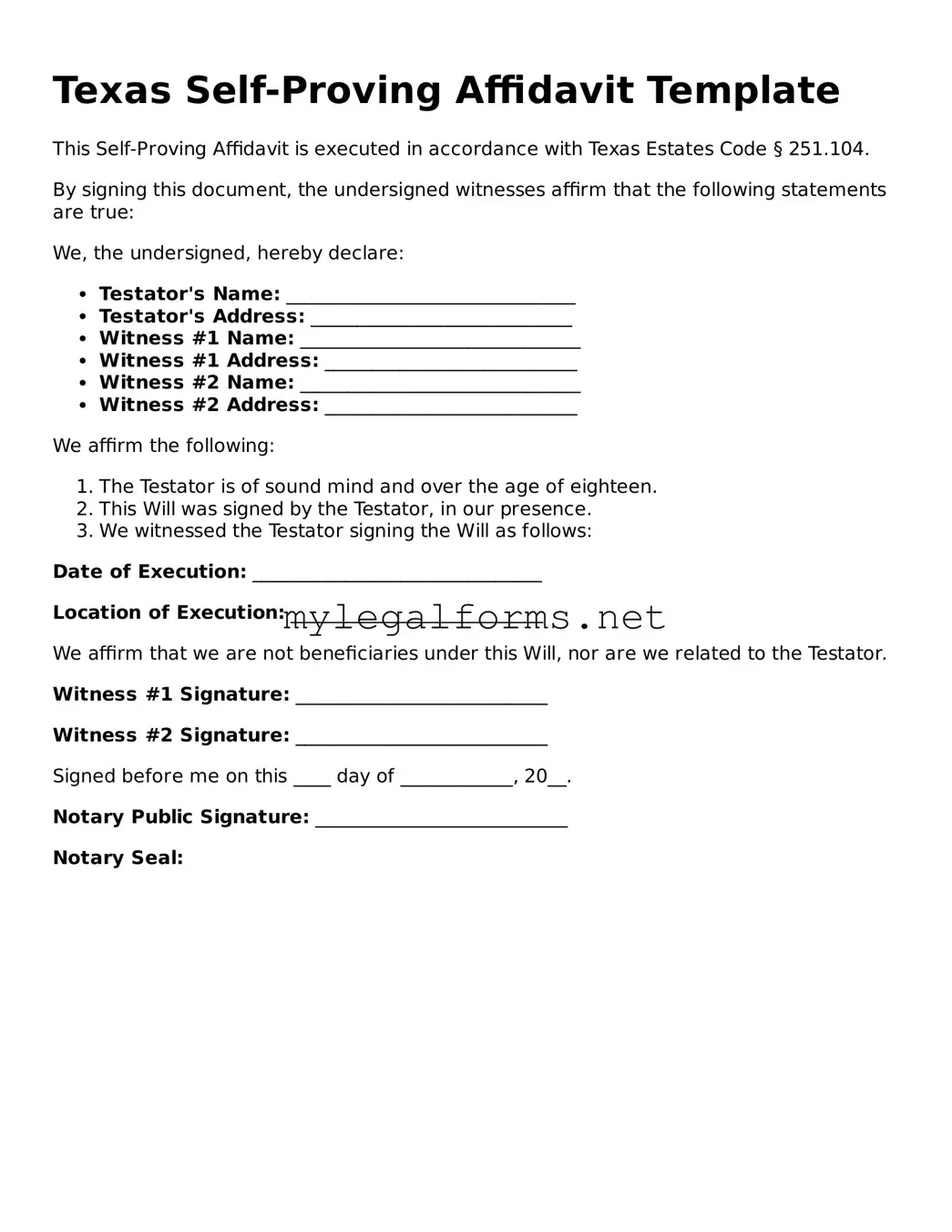Texas Self-Proving Affidavit Template
This Self-Proving Affidavit is executed in accordance with Texas Estates Code § 251.104.
By signing this document, the undersigned witnesses affirm that the following statements are true:
We, the undersigned, hereby declare:
- Testator's Name: _______________________________
- Testator's Address: ____________________________
- Witness #1 Name: ______________________________
- Witness #1 Address: ___________________________
- Witness #2 Name: ______________________________
- Witness #2 Address: ___________________________
We affirm the following:
- The Testator is of sound mind and over the age of eighteen.
- This Will was signed by the Testator, in our presence.
- We witnessed the Testator signing the Will as follows:
Date of Execution: _______________________________
Location of Execution: ___________________________
We affirm that we are not beneficiaries under this Will, nor are we related to the Testator.
Witness #1 Signature: ___________________________
Witness #2 Signature: ___________________________
Signed before me on this ____ day of ____________, 20__.
Notary Public Signature: ___________________________
Notary Seal:
